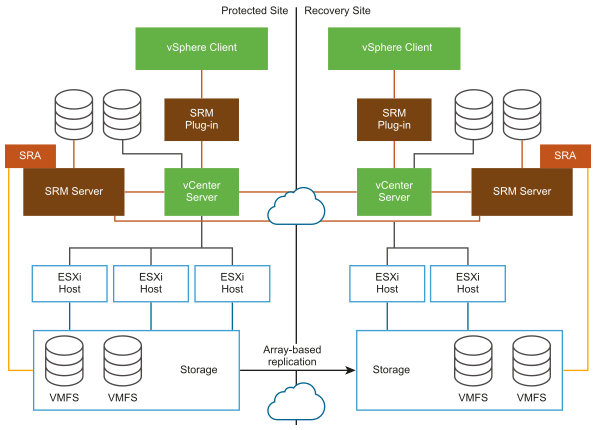When you use array-based replication, one or more storage arrays at the protected site replicate data to peer arrays at the recovery site. With storage replication adapters (SRAs), you can integrate Site Recovery Manager with a wide variety of arrays.
To use array-based replication with Site Recovery Manager, you must configure replication first before you can configure Site Recovery Manager to use it.
If your storage array supports consistency groups, Site Recovery Manager is compatible with vSphere Storage DRS and vSphere Storage vMotion. You can use Storage DRS and Storage vMotion to move virtual machine files within a consistency group that Site Recovery Manager protects. If your storage array does not support consistency groups, you cannot use Storage DRS and Storage vMotion in combination with Site Recovery Manager.
You can protect virtual machines that contain disks that use VMware vSphere Flash Read Cache storage. Since the host to which a virtual machine recovers might not be configured for Flash Read Cache, Site Recovery Manager deactivates Flash Read Cache on disks when it starts the virtual machines on the recovery site. Site Recovery Manager sets the reservation to zero. Before performing a recovery on a virtual machine that is configured to use vSphere Flash Read Cache, take a note of virtual machine's cache reservation from the vSphere Client. After the recovery, you can migrate the virtual machine to a host with Flash Read Cache storage and manually restore the original Flash Read Cache setting on the virtual machine.
Storage Replication Adapters
Storage replication adapters are not part of a Site Recovery Manager release. Your array vendor develops and supports them. You must install an SRA specific to each array that you use with Site Recovery Manager on the Site Recovery Manager Server host. Site Recovery Manager supports the use of multiple SRAs.
